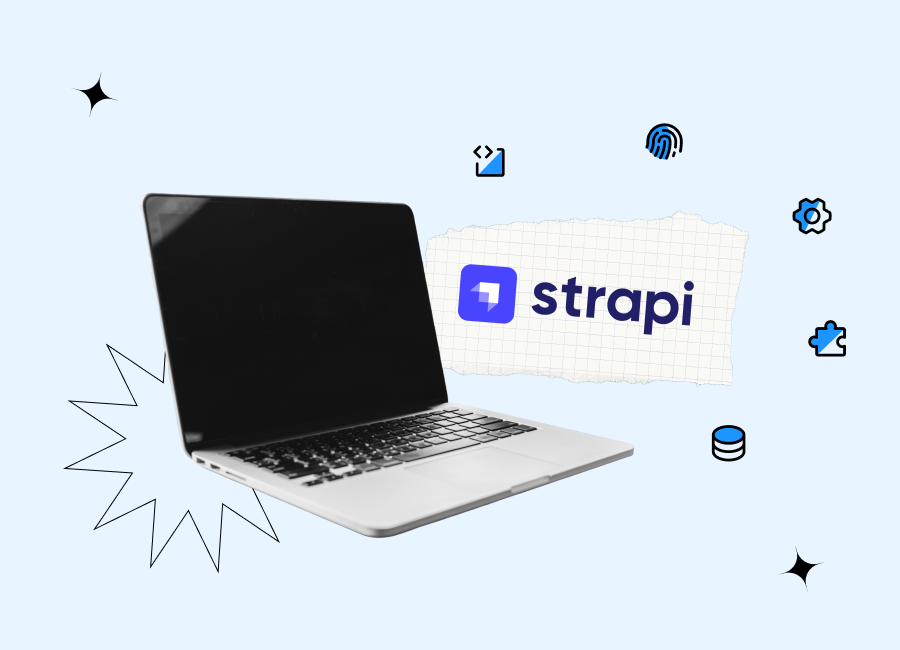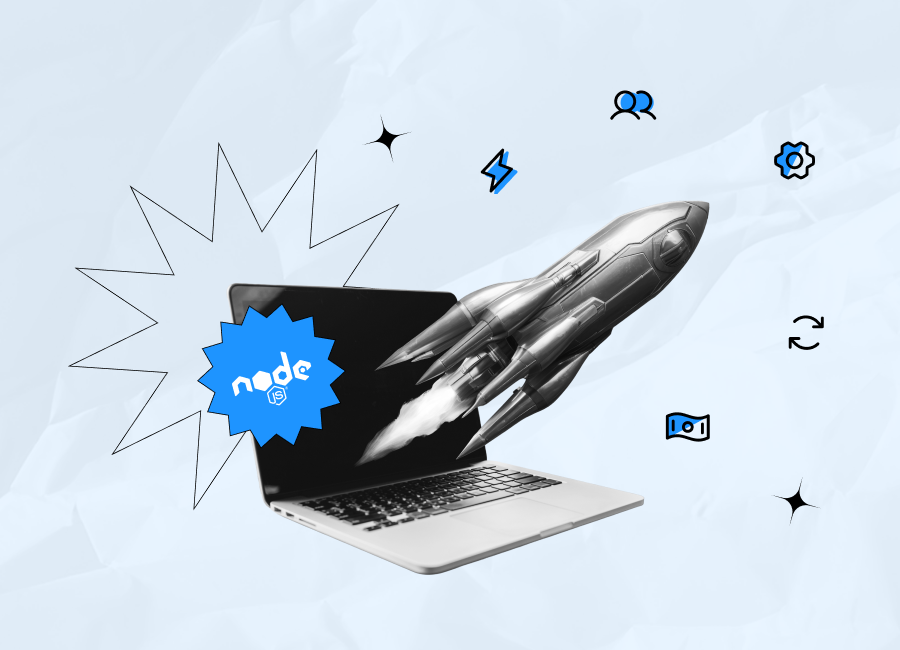As outsourcing is a very popular approach to software development today, the market offers a variety of business models. The list of available options includes the Time and Material model, fixed-price projects, and staff augmentation. Each has its pluses and minuses and allows building interaction with your IT partner in a manner comfortable for your company.
According to a survey conducted by Deloitte, 70% of companies outsource software development services with a view to cutting costs. However, to achieve this goal, it's important to choose a business model wisely.
This article will take a closer look at the peculiarities of the T&M project model. We hope our recommendations will help you understand whether it’s a feasible option for your project.
How T&M project management is organized
Time and Material pricing is based on billing customers for the working hours of specialists and for all the materials or resources used. The cost of the work is calculated from the set hourly rates of each development team member.
Typically, this model is compared with the fixed-price approach, a completely different pricing option. Fixed-price means the client knows the exact project costs at the moment of signing the contract. Some might say this is more convenient for clients. However, we believe that the specifics of each model should be considered in each case.
Benefits of the Time and Material model
Let’s start with the advantages that usually encourage our clients to opt for this model for their projects.

- Quick start. If the T&M model is chosen, it is possible to proceed to working on the project practically immediately. Both the client and the development team know that the chosen business model allows them to introduce updates even after work on the project has been initiated. But in fixed-price projects, the situation is quite different. All the stages of contract approval and signing may take long months, as quite often a client doesn’t have a full understanding of the scope and requirements. A lengthy process of negotiations and discussions of conditions and terms can seriously delay the project start.
- Fair price. You will pay for the actual work done and not a cent more. Compare the fixed-price model, where software development companies must take any possible risk into account and include all possible expenses in the development cost that the client will have to bear. Even if the project manages to avoid those risks, the final price will remain the same.
- Flexibility. The T&M model is absolutely change-friendly. If you want to add new resources or exclude them, it won’t be a problem. That way, you’ll be able to manage the development process and speed up or slow down the project realization. Moreover, as you know, market conditions are changing quickly. The requirements you developed in the first stages of your project may turn out to be irrelevant some months later. With the T&M model, it won’t be a problem to introduce necessary changes.
- Pay as you go. This model allows for conducting payments in a convenient way (usually, once a month). You see what has been done and pay precisely for that.
- Customer engagement. T&M projects usually allow (and require) deeper customer involvement. As a result, the chances are significantly higher that the final product will fully satisfy the clients’ requirements and meet their expectations.
Are you considering different models for working with developers at the moment?
Contact us to find out whether Time and Material model is the best one for you or whether you should opt for another variant.
Pitfalls of T&M projects: Are there any?
Like any other model, T&M has its disadvantages. But most of the potential risks that clients speculate about are groundless. We’ll prove that with some particular examples of concerns we’ve heard from our customers.
Below are some of the most popular myths (or truths?) about Time and Material pricing.
- I’ll need to constantly track costs and stay fully involved in the project.
Yes, we can fully agree with this point. But that’s not necessarily something you should worry about, though you should be ready to spend time on managing the process and tracking expenses. Quite often these tasks are performed by a Product or Project Manager on the client’s side if there is one.
T&M projects do require more participation from the client’s side, but from some perspectives, that can even be a plus, as we’ve noted above. If you are ready to stay involved with a view to achieving better results, this model provides that possibility. With the T&M approach, you will always know what stage the development process is in and what exactly is being done at each moment.
- I’ll run out of money before the solution is built.
It’s obvious that the project budget can’t be endless, and clearly there can be concerns related to cost. However, you should understand that the final cost won’t come as an absolute surprise. Your software development partner will provide you with estimates and you’ll know in advance whether the costs are reasonable for you.
Quite often, development companies create positive and negative scenarios in their time and money estimations. This means that, from the very beginning, you can see how long it will take to build your product, even if the team has to deal with all of the possible risks and challenges.
Moreover, the high level of flexibility that is possible with the Time and Material model lets you manage your expenses and introduce changes that will help to compensate for some unexpected costs.
- Developers’ rates can increase significantly and I won’t be able to get my solution fully built due to budget limits.
This point is closely related to the previous one, but this problem can be avoided easily as well. Set rates are usually approved in the signed contract, and this means that while you are working with your services provider under this contract, the rates won’t change.
That’s why it’s important to be very attentive to the details of the contract with your service provider. Check all the figures indicated in it. If the agreement doesn’t contain any points regarding set rates, we recommend adding them.
- I won’t know when my project will be ready.
As the T&M approach is typically used for projects with unclear requirements and scope, which therefore may involve a lot of changes, it is obvious that final deadlines may be rather flexible. But at the same time, thanks to that flexibility, you can control and manage the time frames. In any case, your developers will provide you with rough estimates from the very beginning.
- Developers just want to get more money and will try to work as slowly as possible.
Some clients are of the opinion that developers are not interested in finishing the work on their project quickly and as a result are working inefficiently. But there are many options today that help customers avoid such risks. For example, you can use various tools to track the time taken.
You can ask the development team to send you interim reports that will make it possible to better monitor their progress. As the majority of teams today follow the principles of Agile methodology, they conduct daily 15-minute stand-ups in which they discuss their progress and further plans. A client always has the opportunity to join these meetings or can request another form of reporting
When to use the T&M model
To make it easier for you to understand whether this model suits you, we’ve prepared a short checklist for you:
- I have a long-term project.
- The scope of the project is not fully clear.
- The project needs to be built from scratch and the discovery phase hasn’t been conducted.
- We need to proceed to development as soon as possible, and there isn’t much time for approving documentation.

If you recognize your situation in that description, the Time and Material pricing model might be exactly what you need. That doesn’t mean your case needs to cover all the above-mentioned points to be a good candidate for T&M. Sometimes even just one of those points will tip the balance in favor of this approach.
However, in the case of a small project with a clearly defined scope, the fixed-price approach will be a better option.
Instead of a final word
As you can see, the Time and Material model provides enough flexibility to allow for changes to the requirements without the necessity to overpay. As a client, you’ll be charged only for the actual work done. That's why, even if there is little understanding in the beginning of how many specialists will be required or how many working hours, this model will protect you from many risks and additional expenses.
At Cogniteq, we are very flexible and can build our cooperation with clients in accordance with the principles of various models. At the very earliest stages, when we are analyzing the requirements and specifics of the project, we always offer a variety of options for clients and explain all the pluses and minuses of each of them in individual cases.
Today we work with a wide range of innovative technologies, with a special focus on ML, AI, IoT, and AR/VR, among others. To gain a better understanding of what we can offer our clients, we recommend taking a look at our portfolio, which includes just a small sampling of our successfully launched projects.
If you want to know more about our services or are ready to discuss your own project ideas, leave your inquiry in our contact form and we will reach out to you as soon as possible.
FAQ
What is the difference between fixed price and time and material model?
The fixed price model presupposes that you approve the final amount that has to be paid for the project based on the preliminary conducted analysis and estimation. The time and material model includes calculating the cost of development services based on the working hours of specialists and all the resources and materials used. It means that in this case, initially, the exact amount is not known.
When is it sensible to choose the time and material model?
It is recommended to opt for this model when you have long-term projects with changing requirements. This model is also a good variant when you want to start the development process as soon as possible and do not have a lot of time for conducting the discovery phase and approving all documentation beforehand.










































